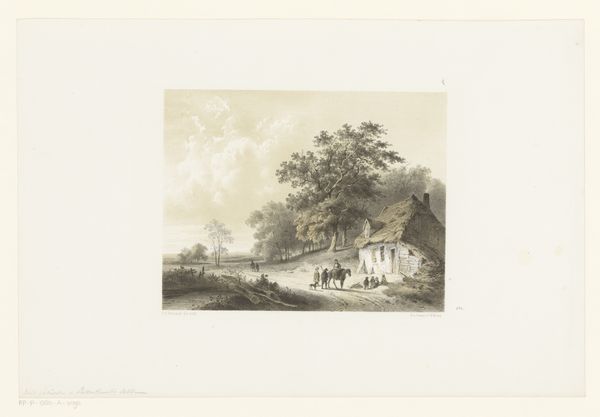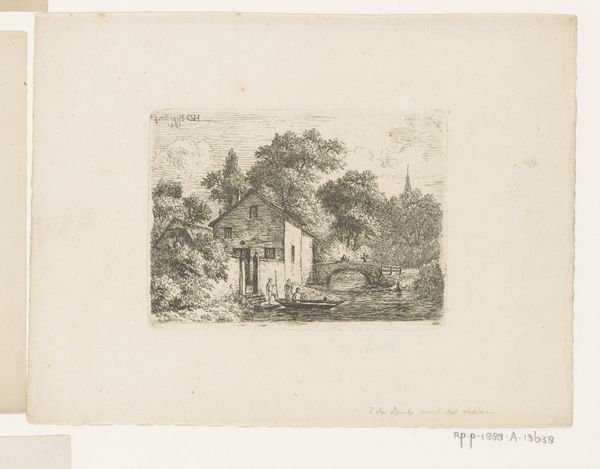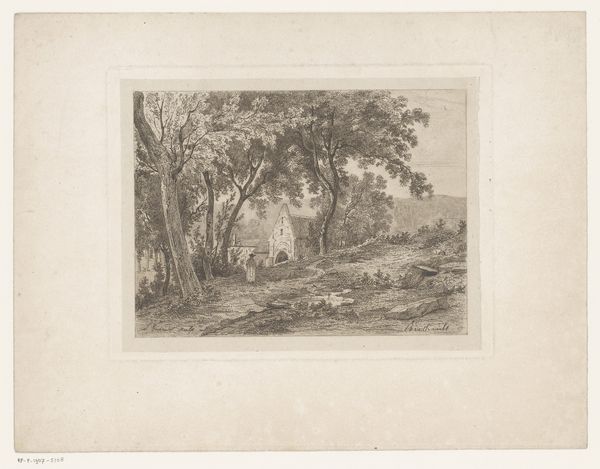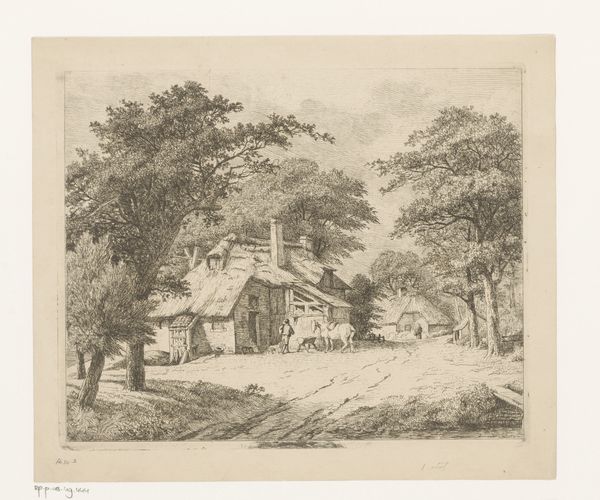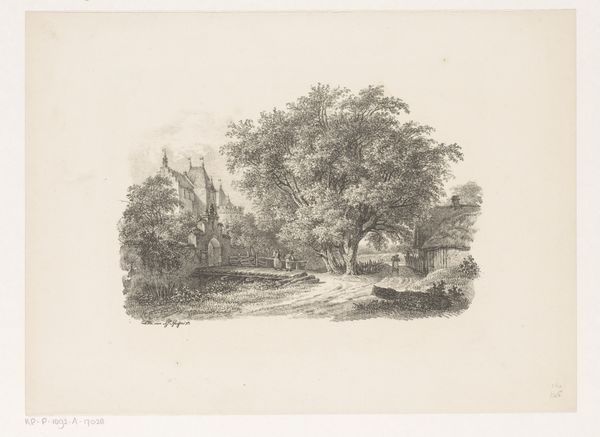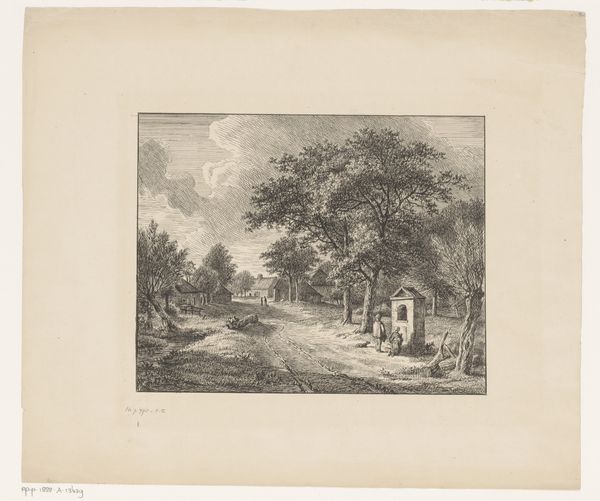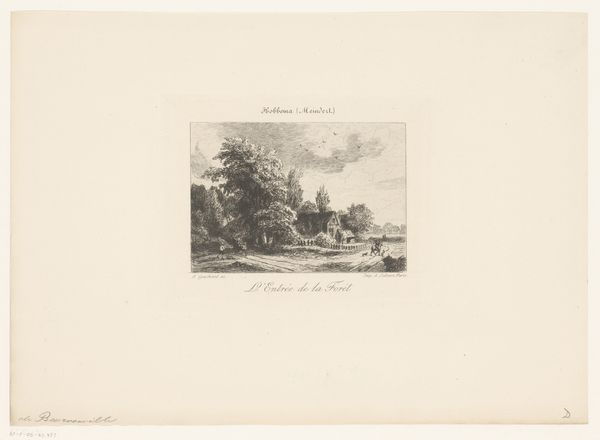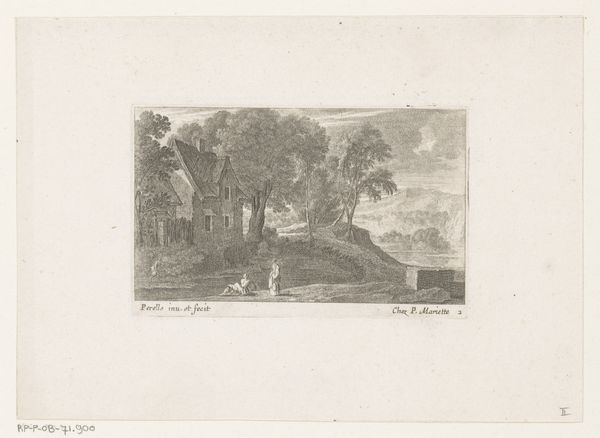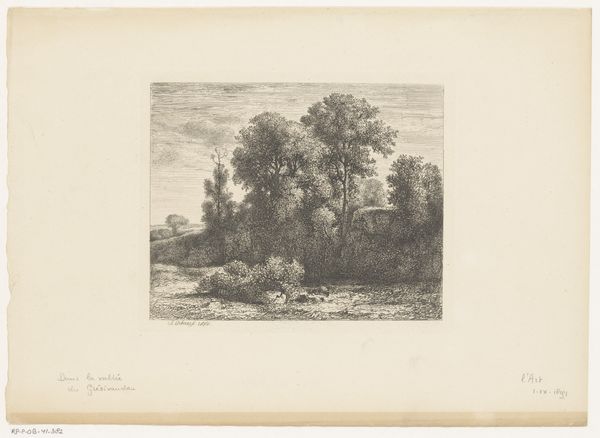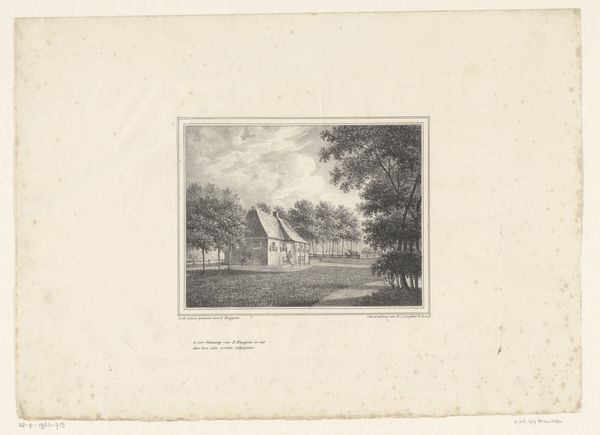
drawing, print, etching
#
drawing
# print
#
etching
#
landscape
#
romanticism
#
genre-painting
Dimensions: height 295 mm, width 430 mm
Copyright: Rijks Museum: Open Domain
Curator: This print, housed here at the Rijksmuseum, is called "Ruiters voor een herberg," or "Riders Before an Inn," created before 1848 by Arie Ketting de Koningh, using etching as its medium. It’s a piece that really speaks to the romantic landscape tradition. Editor: Immediately, I see a sort of liminal space – the tavern feels less like a bustling social hub and more like a threshold, a place between journeys, reflected in the monochrome, its almost dreamlike quality. It hints at stories, but holds them back. Curator: Indeed. Consider how the etching process itself contributes. The fine lines, the subtle gradations of tone – they all point to a careful, almost meticulous crafting of atmosphere. How the burgeoning public sphere and expanding print culture shaped artists, making such genre scenes quite popular and, in turn, giving rise to different tiers of societal commentary. Editor: That’s interesting, how you’re situating its popularity in a context of print culture – for me, those qualities contribute to a feeling of quiet contemplation before what’s next to come. These travelers may not represent larger geopolitical actors, they signify how identity and social hierarchy affect how bodies occupy this space. How might social differences like gender, race, or class shape the experiences of those at the Inn? Curator: That’s a fantastic question. We need to remember how access to inns, transportation, even leisure, was far from universal at this time. Romanticism, though celebrated for its supposed universality of feeling, often reflected a highly particular, privileged perspective. We have to think about what is purposefully *not* shown, such as lower-class figures performing the work necessary for these figures to meet for social pleasure. Editor: The interplay between openness and restriction resonates with me. While the work seemingly celebrates idyllic life, the shadows cast hint that some figures are relegated outside, creating a tension within this romantic scene that points toward some figures holding more social weight than others. Curator: Absolutely, and recognizing this allows us to appreciate how artistic genres are influenced by complex negotiations with social contexts of both then and today. Editor: Precisely. It’s a stark reminder that historical context provides frameworks for today, making art such as "Ruiters voor een herberg" particularly relevant to issues that communities encounter when shaping identities, race, gender and the sociopolitical landscape today.
Comments
No comments
Be the first to comment and join the conversation on the ultimate creative platform.
